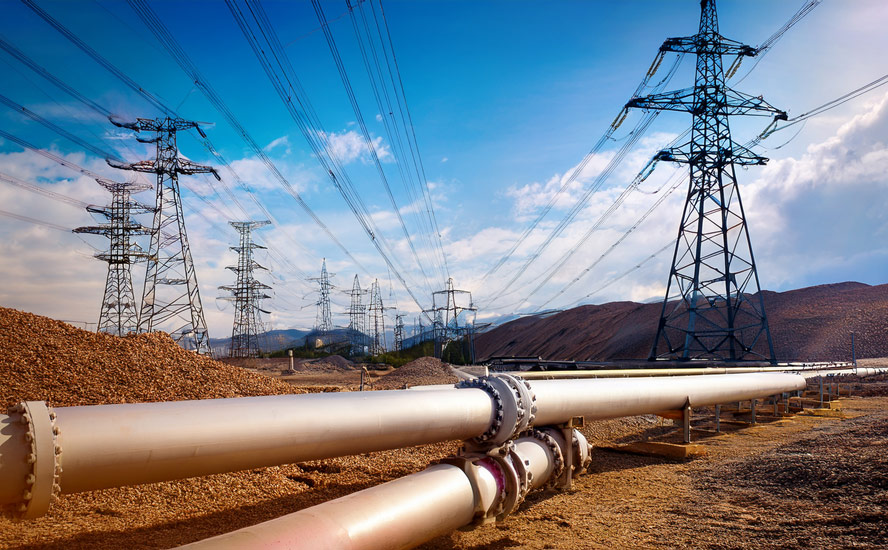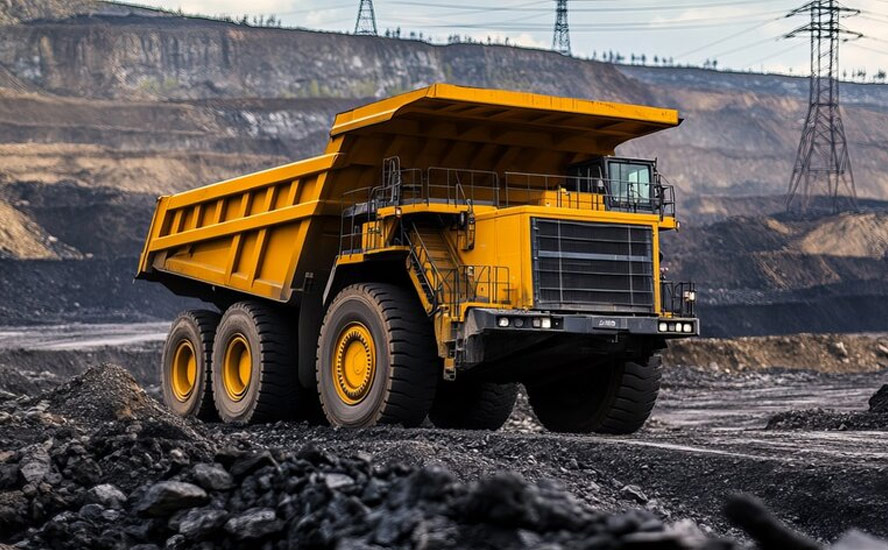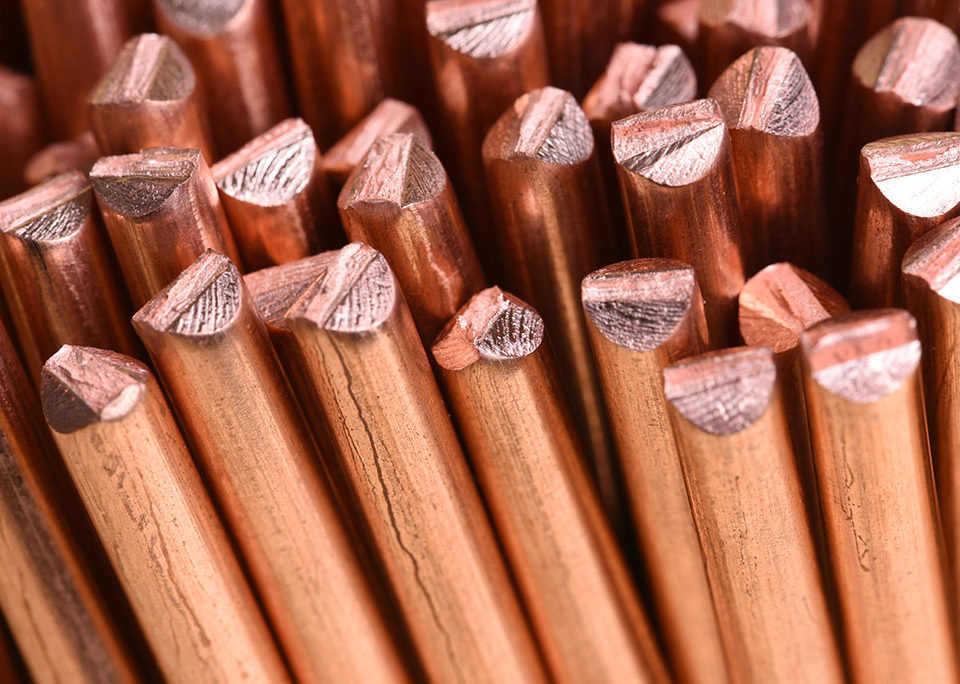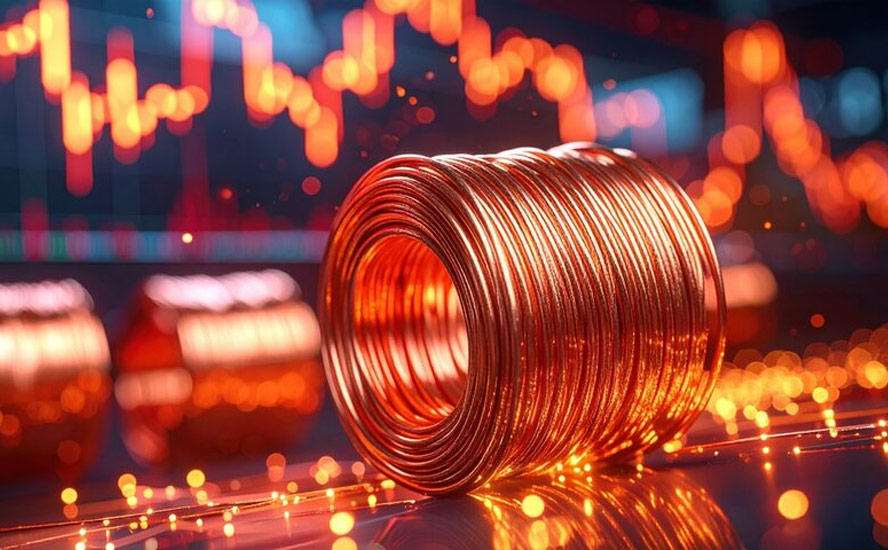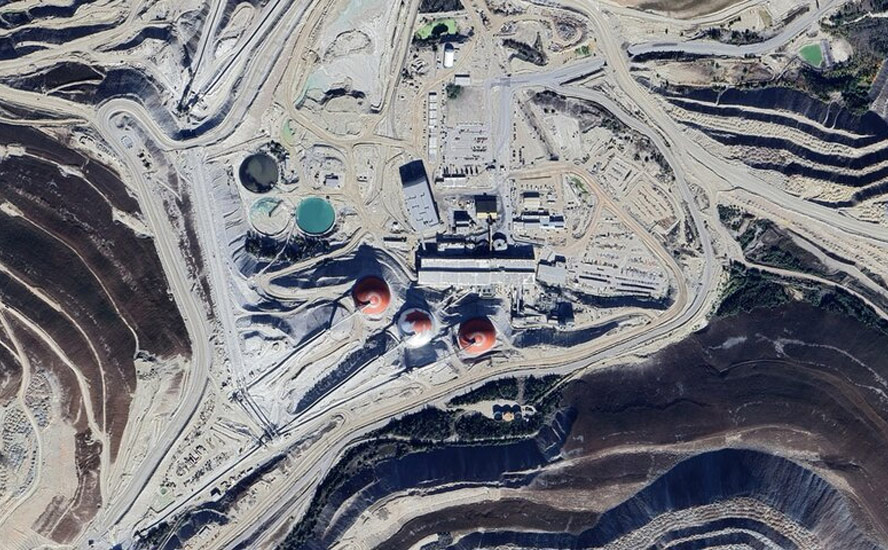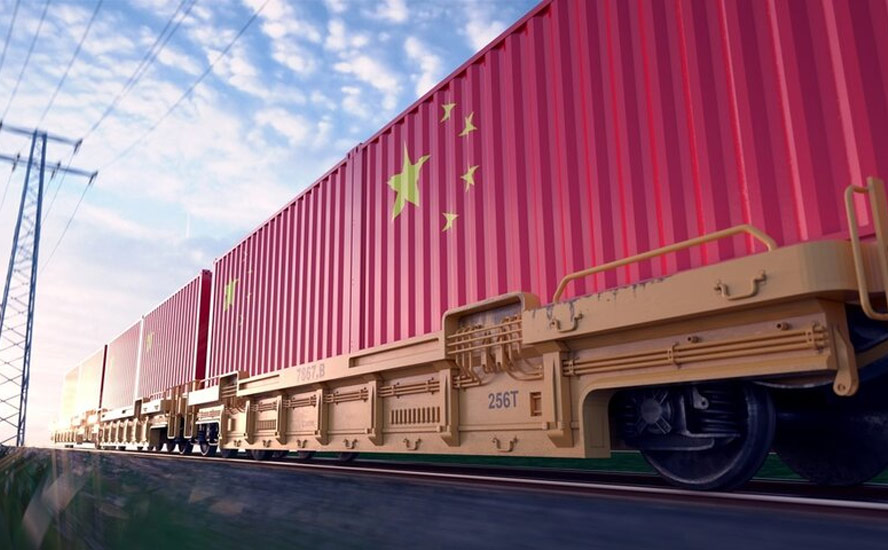Anti-mining decisions could slam the brakes on US electrification plans
2021.12.24
As US automakers like Ford and GM prepare to break ground on a number of electric-vehicle manufacturing facilities in 2022, they will be competing with international rivals, and US based start-ups, for the supply of metals required for the so-called greening of the economy.
That’s because the Biden administration has come out against domestic mining through a number of anti-extractive industry decisions detailed below, while it supports cleaner EV manufacturing and auto-assembly.
As is so often the case, the strategy is politically motivated.
Biden: Build factories not mines
The White House is reportedly working to enlist labor support (presumably not mining labor unions though) as it tries to build a case that its green policies are creating jobs, ahead of the 2022 midterm elections.
Biden officials have reached out to unions across the country asking for specific job-boosting projects the administration can take credit for, labor sources have said.
The Democratic Party’s aversion to mining is, at least partially, a reflection of the American public’s reluctance to accept the extractive industry as part of the country’s future.
Mining rare earths? Too complicated. Too polluting. Let China do it. Let anybody do it but us. It’s classic NIMBYism. The same goes for cobalt, lithium, sulfide nickel, or most of the other 35 minerals the US deems critical to its economic and national security.
However, confronted by the twin realities of climate change — a May 2021 report by the International Energy Agency says the world must bring about a “total transformation” of its energy system if it hopes to reach net-zero emissions by 2050 — and the fact that China has become the world’s largest producer or consumer of nearly all the metals needed in a green and high-tech economy, has forced Washington to re-think its metal sourcing strategy.
Upon becoming president, Biden proposed a $2.3 trillion infrastructure bill including a $174 billion investment to “win the EV market.” Reduced to $1 trillion to appease Senate Republicans, Biden’s plan, recently signed into law, “will enable automakers to spur domestic supply chains from raw materials to parts, retool factories to compete globally, and support American workers to make batteries and EVs.”
It was music to the mining industry’s ears.
Not only would the new president follow in Trump’s footsteps as an advocate for mining, but he would also support bipartisan efforts to foster a domestic supply chain for lithium, graphite, rare earths, sulfide nickel and other strategic materials that the United States imports from China and other countries.
But there was a problem, and still is. Biden is a social democrat who believes in the power of the state to tax & spend, and to regulate industry for the greater good…at least according to standards set by the Democratic Party.
As Obama’s vice president, Biden was well regarded in conservation circles. One of his first acts upon inauguration was to impose a moratorium on oil and gas drilling in the Arctic National Wildlife Refuge.
Environmental groups across Minnesota, Nevada and Arizona, three battleground states that employ thousands of miners, said in the fall of 2020 they would aggressively lobby Biden to oppose new mines should he defeat Trump.
Yet here was Biden supporting domestic mining. How could he square that with his pro-conservation views?
The upshot is that Biden has backed off his earlier (2020 presidential campaign) endorsement of the mining industry. Instead, the President has signaled he prefers to rely on allies for EV metals, such as Canada, Australia and Brazil.
So, instead of building a “mine to EV” supply chain, Biden and his Democrats want to skip the mining and go straight to the cleaner, manufacturing-intensive electric vehicle-building, that will supposedly bring plenty of jobs.
In effect what Biden is saying here, is that the US wants to replace China as the world’s supplier of batteries and EVs, create its own green “one belt one road” by sourcing its raw materials — lithium, graphite sulfide nickel, cobalt, etc. — from countries friendly to its interests.
Yet the missing link, the mining part of the nascent mine to EV supply chain, is becoming a problem for this President, who has struggled to pass legislation through a divided Congress. Biden can’t even count on members of his own party, like Sen. Joe Manchin who has vigorously opposed his Build Back Better plan and whose support is needed for the $1.75 trillion climate and social spending bill to make it past the Senate.
A Reuters story this week claims the United States has enough reserves of lithium, copper and other metals to build millions of its own vehicles, but opposition to new mines may force the country to rely on imports that could delay efforts to electrify its roughly 275 million cars and trucks.
Earlier this year Biden issued an executive order aimed at making 50% of all new vehicles sold in 2030 electric.
Arguably, if electrification is delayed due to metals supply problems, his administration have only themselves to blame.
The United States has plenty of EV metals but the White House and Congress have chosen not to tap them.
“If we don’t start getting some mining projects under construction this coming year, then we will not have the raw materials domestically to support EV manufacturing,” said Reuters quoting an executive at a company developing a US lithium-boron deposit.
Among the mining projects facing opposition from indigenous groups, ranchers or environmentalists, are:
- The Thacker Pass lithium project in Nevada. A judge in September denied a request by native Americans to halt excavation at the mine site over concerns it may host ancestral bones and artifacts. In early 2022, federal judges will rule in separate cases whether mine approvals granted by former President Trump should be reversed.
- Another lithium project, in North Carolina, is facing pushback from local landowners that could cost Piedmont Lithium necessary local zoning approvals.
- State regulators in Minnesota are weighing whether permits issued to Polymet Mining, controlled by Glencore, should be revoked or re-issued. The North-Met project would be Minnesota’s first copper-nickel mine.
- Biden himself took steps to block Antofagasta’s Twin Metals copper and nickel project in Minnesota, with the US Forest Service in October proposing a 20-year ban on mining in the Boundary Waters region. The Chile-based company is appealing the decision which it calls politically motivated, since Biden aims to shore up support with environmentalists and counter his earlier commitments to allow more domestic mining. The ban effectively resumes a process started by former President Barack Obama’s administration to block mining in the region. Trump had put that process on hold.
- The massive Pebble deposit of Northern Dynasty has been halted because of environmental concerns.
Along with siding with, or not going against, mining opponents, the Biden administration is also practising resource nationalism by trying to exact a larger piece of the metals pie.
In September a congressional committee added language that would set an 8% gross royalty on existing mines and 4% on new ones. There would also be a 7-cent fee on every ton of rock moved. According to a Reuters story the proposal would mark one of the most-substantial changes to the law that has governed U.S. mining since 1872 and could raise about $2 billion over 10 years for federal coffers…
Executives say Biden’s goal to have 35% of U.S. electricity generated by solar panels – up from 3% today – would be all but impossible without new mines.
Imports of solar panels from certain areas of China have been halted.
Meanwhile the administration’s plan to offer tax incentives for US EV purchases has run afoul of Canadian auto industry representatives, who say it favors union labor and will adversely impact the sector, which is closely integrated with the United States.
Biden’s Build Back Better plan includes up to US$12,500 in incentives for certain electric vehicles built in the United States with union labor. The provision within the $1.75T package of social spending and climate legislation has passed the House of Representatives and awaits approval in the Senate.
A better way
With all that is going on in the US — Biden’s clean energy agenda; America now the world’s second largest EV manufacturer behind China; new battery plants being built including Tesla’s second gigafactory in Texas; billions worth of EV investments coming from major carmakers like Ford, GM, VW and Mercedes, battery-makers such as Korea’s SK Innovation; and 11 electric vehicle start-ups such as Rivian — we would expect there to be a lot of lithium needed to satisfy a burgeoning domestic mine to battery to EV supply chain.
In fact there is only one US lithium mine, Albemarle’s Silver Peak in Nevada, outputting a tiny 5,000 tonnes of lithium carbonate per year, according to the US Geological Survey.
Bloomberg NEF shows, globally, just over five times more lithium is needed in 2030 compared to current levels. In the absence of new North American lithium supply, this lithium will have to come from China, which processes the majority of the world’s lithium and makes nearly two-thirds of all lithium batteries.
It is ridiculous to think that the US can rely on China for delivering a steady and reliable supply of lithium and other critical minerals it has locked up.
In fact, we don’t have to. There is enough lithium in North America to satisfy US and Canadian needs, and then some.
Cypress Development Corp
Cypress Development Corp. (TSXV:CYP, OTCQB:CYDVF, Frankfurt:C1Z1) has a sizeable lithium deposit in Nevada from which they are trying to produce lithium hydroxide, the preferred lithium product for EV batteries. They see themselves profiting from a lithium market segment that is expected to see high demand and potential shortfalls in coming years, especially in North America as the production of battery cells and electric vehicles ramps up.
Cypress’Clayton Valley lithium deposit would be mined from neither brine nor hard rock, but claystone. An average production rate of 15,000 tonnes per day to produce 27,400 tonnes LCE annually over a +40-year mine life means the project stacks up extremely well against any of the 10 deposits listed here. The company has already completed a preliminary economic assessment (PEA) and a prefeasibility study (PFS).
Of course, there are several lithium juniors all trying to bring new deposits into production; Cypress happens to be our pick due to a number of factors including: its size, its scalability to a major’s needs, its low cost of production, its metallurgy, and last but not least, its location in mining-friendly Nevada next door to America’s only producing mine, Albemarle’s Silver Peak.
Most recently attention has focused on a pilot plant the company is running to test its lithium extraction process.
According to Cypress, the one tonne per day plant will provide essential data for a planned feasibility study and enable the company to produce marketing samples to support negotiations with potential offtake and strategic partners.
In November the company reported the launch of extraction testing of lithium-bearing claystone, with test work ongoing utilizing chloride-based leaching combined with the Chemionex—Lionex process for Direct Lithium Extraction (DLE).
The company just completed a 7-day continuous run at the pilot plant, operating at is designed feed rate of one tonne per day of lithium claystone.
“From an operating perspective, we are very pleased with how the pilot plant has performed to date,” said Cypress’ President and CEO Bill Willoughby, in the Dec. 22 news release. “Most plant components ran throughout the seven days with only minor operating issues, achieving expected targets in materials handling, reagents, and water balance. Over 400 samples of leach solutions and solids were collected and shipped to ALS Global for analysis during the testing period. We look forward to seeing the analytical results and to resume testing in the new year.”
Cypress also reported another piece of good news, an extension of its lease with Del Sol Refining Inc., to 2025. The extension will allow Cypress to expand its use of the facility, beyond requirements for the upcoming feasibility study, and according to Willoughby, “This is important given the likelihood we will want to continue testing.”
If Cypress is able to prove, at its pilot plant, that it can make lithium hydroxide at reasonable cost, and can scale it up, it will be a huge coup for the company and will shift the goal posts for the lithium industry at a time when the industry is in dire need of finding a way to add significantly more supply to balance out explosive demand for battery-grade lithium.


We believe the future of US lithium supply is neither South American lithium brines, nor spodumene deposits Down Under, but lithium hydroxide produced right in Nevada, the top global mining jurisdiction according to the last Fraser Institute Survey, from claystone deposits that are proving to be extremely amenable to low-cost leaching processes. If Cypress is successful in moving its project forward to production, the size of the deposit — capable of supplying about 5% of global demand — would set the price of lithium hydroxide, or significantly influence it, for many years to come.
Note that mineral resources and reserves for the PFS are derived from only a portion of the initial pit, showing a mine life of 40-plus years. All resources and reserves are pit-constrained by property and geological boundaries.
In the initial mining area, only the first eight of 16 “cells” will be required to mine, during the first 40 years of production — at the envisioned production rate of 15,000 tonnes per day.
It is possible that whoever decides to buy the project (or Cypress) will find the specifications of the mine, as outlined in the PFS, sufficient for its purposes. However it is just as likely that a major lithium miner would buy the deposit because of it’s scalability – they could double, or triple, the 15,000 tpd capacity and 27,400 tonnes of annual LCE production set out by Cypress in its base case scenario.
Cypress’ Clayton Valley Lithium Project has the size and scalability to interest a large mining company like Albemarle, a major EV-maker like Tesla, or a world-class battery manufacturer like SK Innovation, developing a large facility in the southern United States.
Cypress Development Corp.
TSXV:CYP, OTCQB:CYDVF, Frankfurt:C1Z1
Cdn$1.88, 2021.12.23
Shares Outstanding 126.6m
Market cap Cdn$242.8m
CYP website
Graphite One
A large part of the Biden administration’s decarbonization strategy centers around building electric vehicles and getting drivers to ditch their gas-guzzling cars and trucks. The White House has set an ambitious goal of stopping the sale of new fossil fuel-powered vehicles by 2035.
None of this happens without lithium, graphite and other battery metals such as nickel, cobalt and manganese, not to mention copper for EV motors, wiring and charging stations.
Of the 89 million vehicles IHS Markit expects to be sold in 2030, it predicts 23.5 million will be electric. That means a soaring market for graphite. Graphite serves as the anode in lithium-ion batteries and is also used in electronics and portable tools.
The average EV requires up to 70 kg of graphite. A Tesla Model S needs even more. Every million EVs require around 75,000 tonnes of natural graphite. Read more
Currently the only way for the US to make an EV transformation is to source its graphite from China. There is no substitute for graphite in the anode and there is no-one else but China that processes coated spherical graphite; they have a monopoly.
A country that is becoming more and more belligerent by the day, economically, politically and militarily. China’s interests no longer align with the US and Canada, more with Russia, and yet we are 100% dependent on this totalitarian regime for making EV batteries that are seen as a key technology for helping to mitigate the effects of climate change, which is becoming glaringly apparent through annual droughts, fires, storms and floods.
Everybody in the automaking game is looking to China to supply graphite for their battery anodes. That includes the 92 US companies that already consume it, the 11 US battery gigafactories currently in the works, the 11 EV start-ups, along with the traditional car-makers, nearly all of which have plans to produce electric vehicles. For details read Graphite prices heading higher on market tightness
Billions are being invested in battery cell plants and new US-based EV production lines yet few people have bothered to check where they are going to get the raw materials.
Expensive, polluting synthetic graphite from China? Natural flake graphite upgraded to 99.9% purity, also in China? We can do better than this.
Our proposal cuts out the Chinese middleman and focuses on Graphite One Inc.’s Graphite Creek project in Alaska, the highest-grade and largest known flake graphite deposit in North America.
Battery-grade graphite mined from Graphite Creek and processed at a plant in the Pacific Northwest will be cheaper and cleaner/ greener than any process done in China.
Earlier this year, the Federal Permitting Improvement Steering Committee (FPISC) granted High-Priority Infrastructure Project (HPIP) status to Graphite One Inc. (TSXV:GPH, OTCQX:GPHOF), which is aiming to develop America’s first high-grade producer of coated spherical graphite (CSG) integrated with a domestic graphite resource at Graphite Creek, Alaska.
The HPIP designation allows Graphite One to list on the US government’s Federal Permitting Dashboard, which ensures that the various federal permitting agencies coordinate their reviews of projects as a means of streamlining the approval process.
Graphite Creek is the highest-grade and largest known flake graphite deposit in North America, spanning 18 km.

The project is envisioned as a vertically integrated enterprise to mine, process and manufacture Coated Spherical Graphite (“CSG”) for the lithium-ion electric vehicle battery market. Graphite One aims to become the first US vertically integrated domestic producer to do so.
The latest resource estimate (March 2019) for Graphite Creek showed 10.95 million tonnes of measured and indicated resources at a graphite grade of 7.8% Cg, for some 850,000 tonnes of contained graphite. Another 91.9 million tonnes were tagged as inferred resources, with an average grade of 8.0% Cg containing 7.3 million tonnes.
A preliminary economic assessment (PEA) envisions a 40-year operation with a mineral processing plant capable of producing 60,000 tonnes of graphite concentrate (at 95% purity) per year.
Once in full production, Graphite One’s proposed graphite products manufacturing plant — the second link in its proposed supply chain strategy — is expected to turn graphite concentrates into 41,850 tonnes of battery-grade coated spherical graphite and 13,500 tonnes of graphite powders per year. A location in the Pacific Northwest is being considered.
Like Cypress, Graphite One’s plans for initial mining encompass only a small part of the whole deposit.
The Graphite Creek production figures were based on resource estimates derived from drilling only less than 30% of the graphite mineralization, so there is further production upside as exploration continues over the 18-km stretch of the Kigluaik mountain range.
For reference, the US imported about 41,000 tons of natural graphite in 2020, including high-purity flake graphite (71%), 28% amorphous and 1% lump. Tesla’s Nevada gigafactory alone needs an estimated 35,200 tons of spherical graphite, the kind required for EV batteries, per year. That means Graphite Creek could potentially meet most of America’s natural graphite needs, including graphite for batteries, brake linings, lubricants, powdered metals, refractory applications and steelmaking.
Graphite One Inc.
TSXV:GPH, OTCQX:GPHOF
Cdn$1.74, 2021.12.22
Shares Outstanding 81.5m
Market cap Cdn$145m
GPH website
Conclusion
Once up and running, Cypress and Graphite One will have the resources and reserves to supply the US markets for lithium and graphite for many years to come.
Moreover, neither company appears to be adversely affected by opposition to their projects, such as we see happening at Thacker Pass in Nevada or Piedmont Lithium’s project in North Carolina. The Clayton Valley Lithium Project is in a remote and arid part of the valley. Graphite Creek in Alaska has effectively been green-lighted by the federal government.
In my opinion, these properties are in the right places with the right metals at precisely the right time. As the race to electrify and decarbonize intensifies competition for lithium-ion battery materials going into the new year, I expect CYP and GPH to do extremely well, which is why I own shares of both companies.
Richard (Rick) Mills
aheadoftheherd.com
subscribe to my free newsletter
Legal Notice / Disclaimer
Ahead of the Herd newsletter, aheadoftheherd.com, hereafter known as AOTH.
Please read the entire Disclaimer carefully before you use this website or read the newsletter. If you do not agree to all the AOTH/Richard Mills Disclaimer, do not access/read this website/newsletter/article, or any of its pages. By reading/using this AOTH/Richard Mills website/newsletter/article, and whether you actually read this Disclaimer, you are deemed to have accepted it.
Any AOTH/Richard Mills document is not, and should not be, construed as an offer to sell or the solicitation of an offer to purchase or subscribe for any investment.
AOTH/Richard Mills has based this document on information obtained from sources he believes to be reliable, but which has not been independently verified.
AOTH/Richard Mills makes no guarantee, representation or warranty and accepts no responsibility or liability as to its accuracy or completeness.
Expressions of opinion are those of AOTH/Richard Mills only and are subject to change without notice.
AOTH/Richard Mills assumes no warranty, liability or guarantee for the current relevance, correctness or completeness of any information provided within this Report and will not be held liable for the consequence of reliance upon any opinion or statement contained herein or any omission.
Furthermore, AOTH/Richard Mills assumes no liability for any direct or indirect loss or damage for lost profit, which you may incur as a result of the use and existence of the information provided within this AOTH/Richard Mills Report.
You agree that by reading AOTH/Richard Mills articles, you are acting at your OWN RISK. In no event should AOTH/Richard Mills liable for any direct or indirect trading losses caused by any information contained in AOTH/Richard Mills articles. Information in AOTH/Richard Mills articles is not an offer to sell or a solicitation of an offer to buy any security. AOTH/Richard Mills is not suggesting the transacting of any financial instruments.
Our publications are not a recommendation to buy or sell a security – no information posted on this site is to be considered investment advice or a recommendation to do anything involving finance or money aside from performing your own due diligence and consulting with your personal registered broker/financial advisor.
AOTH/Richard Mills recommends that before investing in any securities, you consult with a professional financial planner or advisor, and that you should conduct a complete and independent investigation before investing in any security after prudent consideration of all pertinent risks. Ahead of the Herd is not a registered broker, dealer, analyst, or advisor. We hold no investment licenses and may not sell, offer to sell, or offer to buy any security.
Richard owns shares of both Graphite One Inc. (TSXV:GPH) and Cypress Development Corp. (TSXV:CYP). GPH is a paid advertiser on his site aheadoftheherd.com
Legal Notice / Disclaimer
Ahead of the Herd newsletter, aheadoftheherd.com, hereafter known as AOTH.Please read the entire Disclaimer carefully before you use this website or read the newsletter. If you do not agree to all the AOTH/Richard Mills Disclaimer, do not access/read this website/newsletter/article, or any of its pages. By reading/using this AOTH/Richard Mills website/newsletter/article, and whether you actually read this Disclaimer, you are deemed to have accepted it.




